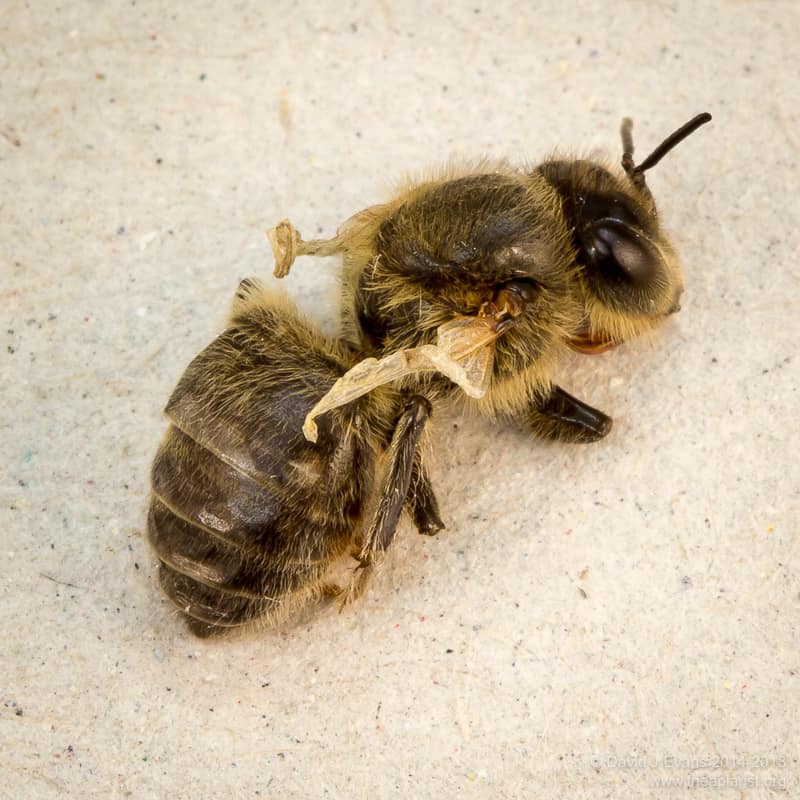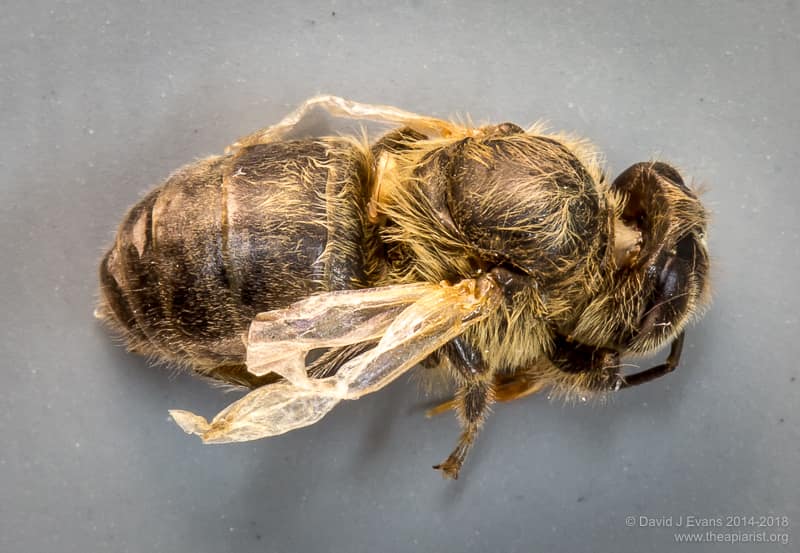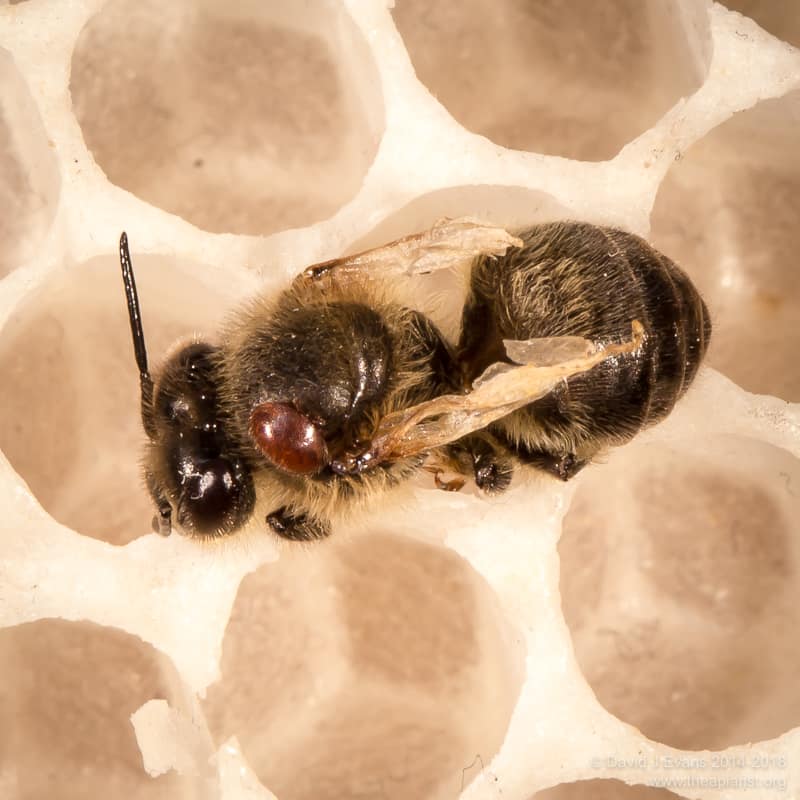Deformed Wing Virus
Deformed wing virus (DWV) is probably the most important viral pathogen of honeybees. In the presence of Varroa the virus is amplified to very high levels in the colony, resulting in newly emerged workers – those that survive long enough to emerge – exhibiting the classic symptoms familiar to most beekeepers. These include deformed or atrophied wings, a stunted abdomen, additional deformities or paralysis of appendages and (not visible) learning impairment. There is a clear association between high Varroa levels, high levels of DWV symptomatic bees and overwintering colony losses.

Classic DWV symptoms
These images are of workers from a colony treated for a month with Apiguard to reduce mite numbers. Many bees remained with symptoms. I suspect the high levels of mites pre-treatment resulted in the amplification of virulent strains of DWV which continued to cause disease even after the mite numbers were reduced. This emphasises the need to monitor mite numbers and treat appropriately with Apiguard, oxalic acid or – during the season – other appropriate integrated pest management practices such as drone brood culling.

Worker with immature mite …

DWV symptoms and mite
Join the discussion ...